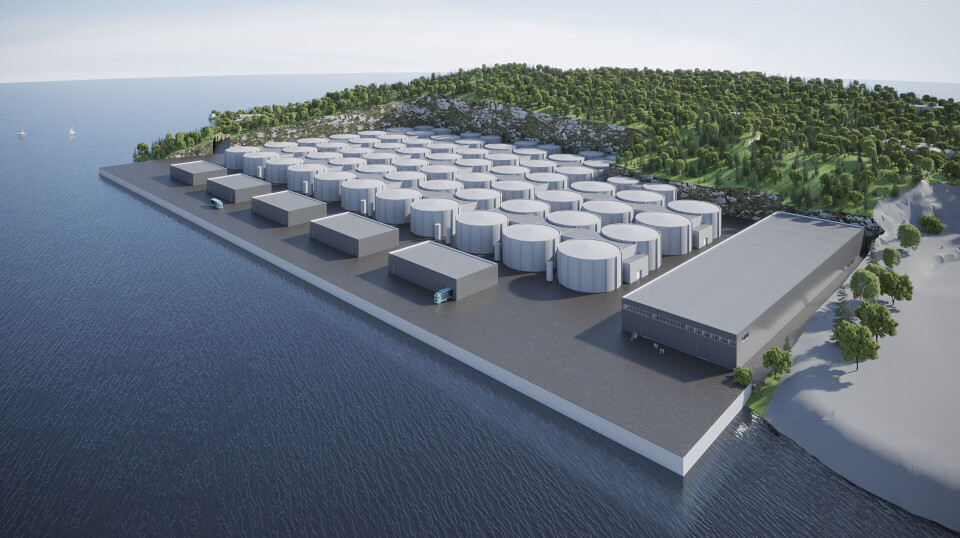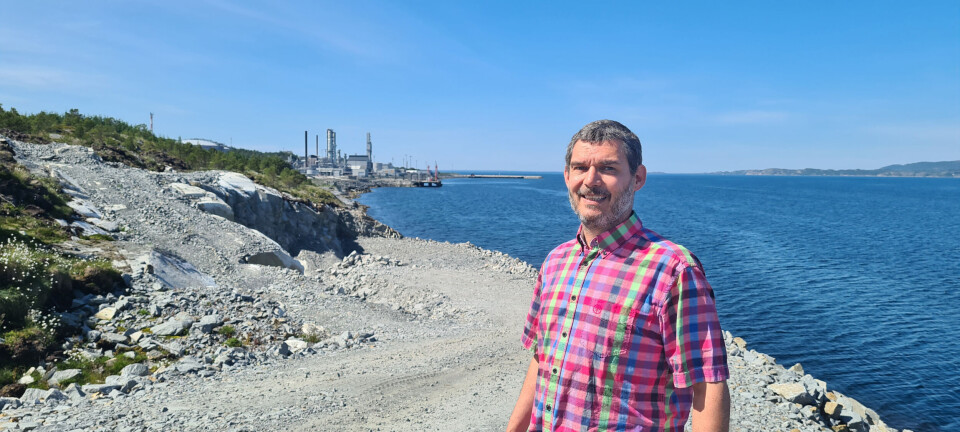
Green light for £550m land-based salmon farm
Norwegian facility will produce 36,500 gutted weight tonnes per year
A proposed NOK 7-7.5 billion (£513-£550 million) on-land salmon farm that would produce 36,500 gutted weight tonnes of fish per year has been given the go-ahead by Møre og Romsdal county council in western Norway.
Salfjord AS plans to use a similar hybrid flow-through/recirculation system to that operated by Norwegian land-based farmer Salmon Evolution, and is working with Artec Aqua, which was the turnkey contractor for the first phase of Salmon Evolution’s facility at Indre Harøy, also in Møre og Romsdal.
Salfjord’s permit from the county council allows a maximum standing biomass of 21,000 tonnes, equivalent to 27 licences for conventional fish farming in the sea, at the Tjeldbergodden industry park in Aure local authority in the Nordmøre region. The permit also allows the production of 30 million smolts per year, offering flexibility for the company’s production plans.
The company is now working to secure additional strategic and industrial investors in order to implement a new share issue during 2023, with the aim of having the first phase of grow-out production ready in 2026.

Financing models
“We’ve worked purposefully on this for a long time and are very pleased that the permit is now in place,” Salfjord co-founder and chief executive Hans Ramsvik said in a press release.
“We’re now looking forward to a dialogue in finding the right partners and exploring financing models. Attention in future will concentrate on building the organisation, risk management and speeding up detail design work.”
Salfjord envisages that the completed plant will comprise a hatchery and departments for initial feeding, grow-out, smolts and post-smolts.
Annual production of harvest-ready fish will be about 44,000 tonnes, corresponding to 36,500 tonnes of head on gutted salmon.
Identical modules
The grow-out department will comprise five identical modules, each with an annual capacity of 7,300 tonnes of HOG salmon, and be based on standardised solutions in order to be able to upscale production efficiently and ensure good fish welfare throughout the facility.
“The permit for smolts makes us self-sufficient for these, and gives us great flexibility in relation to our production plans,” said Ramsvik.
“Our upscaling ambitions extend beyond the Tjeldbergodden facility, and we’re expecting to secure planning permission soon for a further location in Aure local authority.”
Reduced uncertainty
Salfjord said Artec Aqua’s deliveries included similar technology under a virtually identical turnkey contract to Salmon Evolution a little further south.
“Having Artec Aqua on the team reduces uncertainty for construction time and costs,” said Ramsvik. “Thanks to its hybrid system – a flow-through solution with recycling of up to 65% of the water quantity – we’ll also overcome technological, operational and biological challenges.”
Salfjord said with the constant provision of 35-40% fresh seawater and a division into closed zones, hybrid technology has already demonstrated that it poses a low biological risk.
“We’re paying close attention to the technology choices made and experience gained by those who’ve already made the move to land,” said Ramsvik. “Building on experience from a developing industry gives us a knowledge base for improving fish welfare and risk management in design and operation.”
Strong disinfection
Plans include cleaning and very strong disinfection of intake and outlet water to prevent illness entering and exiting the facility. Fish transport in and out will be enclosed, with no release of water.
The temperature of the sea remains fairly constant at depth and fluctuates more nearer the surface. Drawing intake water from different depths, as hybrid system do, helps balance the temperature and reduces the energy needed to heat or cool the water to the optimum temperature for the fish.
“We’re also looking at circular opportunities, such as utilising waste heat from Equinor’s nearby methanol factory,” explained Ramsvik. “That could help to cut our energy consumption as well as reducing the overall pressure on electricity supplies in the area.”
Authorities in Norway imposed a moratorium on new applications for land-based fish farms last year so that it could work out new rules to keep pace with the rapidly developing sector, but councils were allowed to continue processing applications that had already been made, such as Salfjord’s.






















































